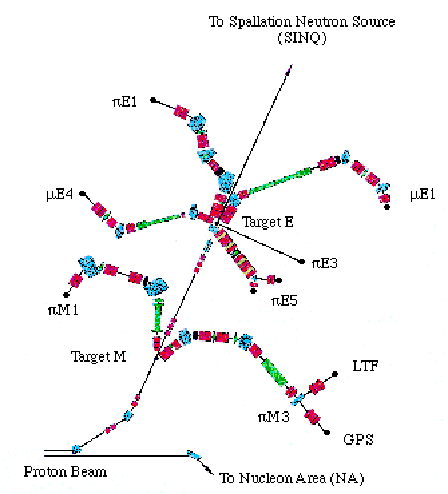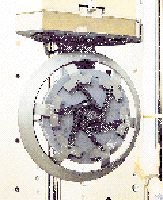





3.2.1 Production targets
The pion beta decay experiment will be carried out in the same p E1
experimental area as the 1997 test runs. The p E1 area is fed by
production target E. Target E consists of a thick graphite wheel which is
rotated on an axis parallel to the incident proton beam. Rotation is necessary
so as not to overheat the target by continually exposing a single area to the
proton beam. Using a rotating target also reduces the frequency with which the
targets must be replaced. Targets E and M are called production targets because
they produce a wide variety of subatomic particles as a result of being struck
by the proton beam. Figure 3.6 is a photograph of one of the PSI production
targets. Among the particles produced are large fluxes of pions. This capacity
for producing large current pion beams has earned PSI (along with accelerators
such as LAMPF and TRIUMF) the name

Figure 3.5: Schematic of the PSI Beamlines. Target M produces particles for
the p M1 and p M3 experimental areas while target E produces particles for
the p E1, p E3, [pi]E5, µE1, and µE4 experimental areas.

Figure 3.6: Production target at PSI. Muons and electrons produced at the
production target along with muons and electrons produced from in-flight pion
decays contaminate the pion beam and must be dealt with in any experimental
setup.
"meson factory". Muons, electrons, and their anti-particles are also produced
by the production target.




















